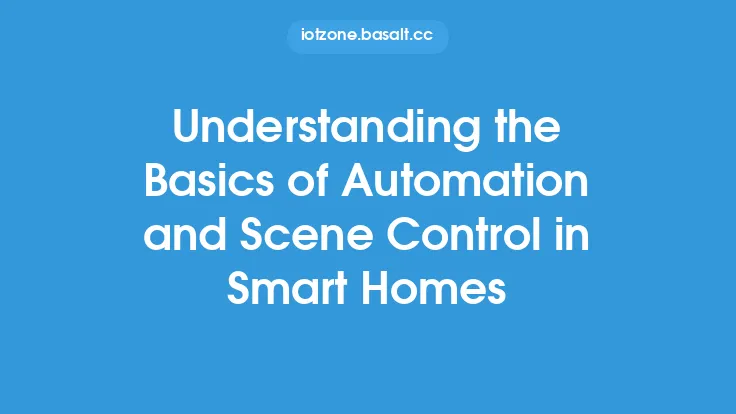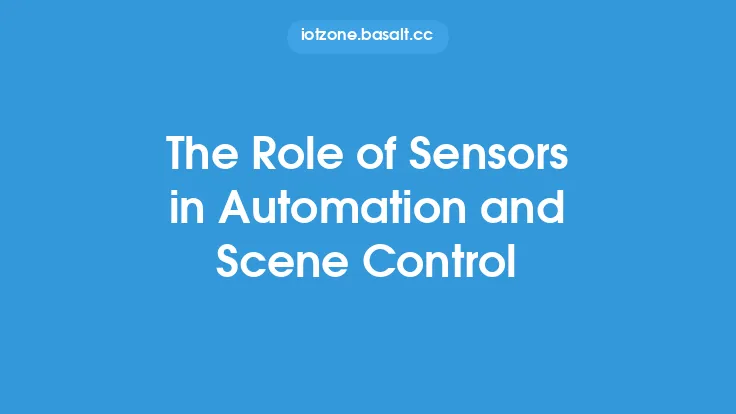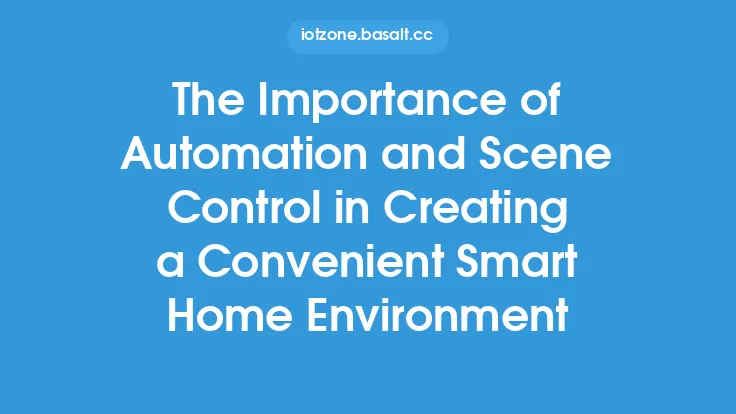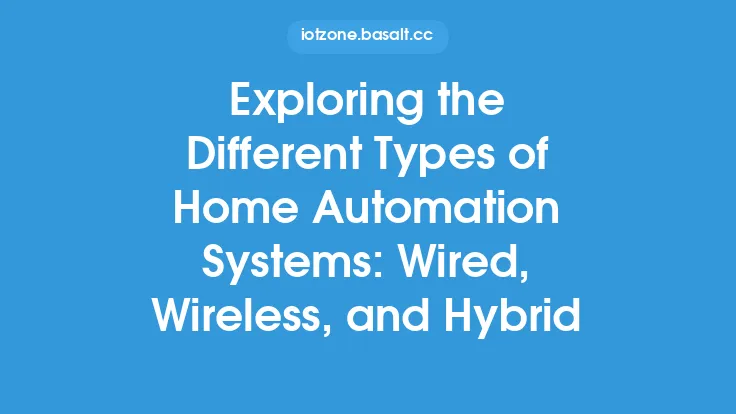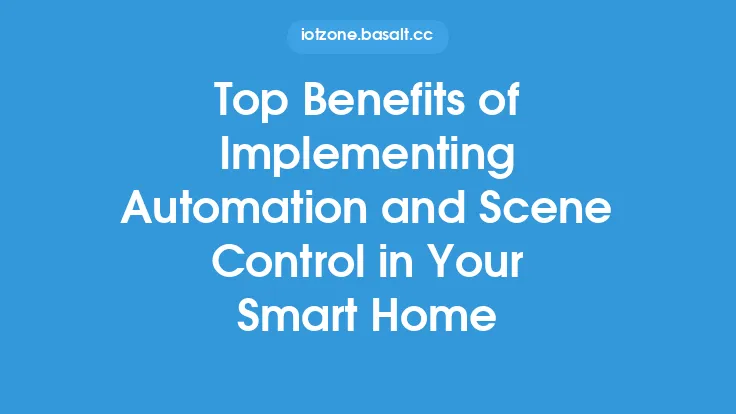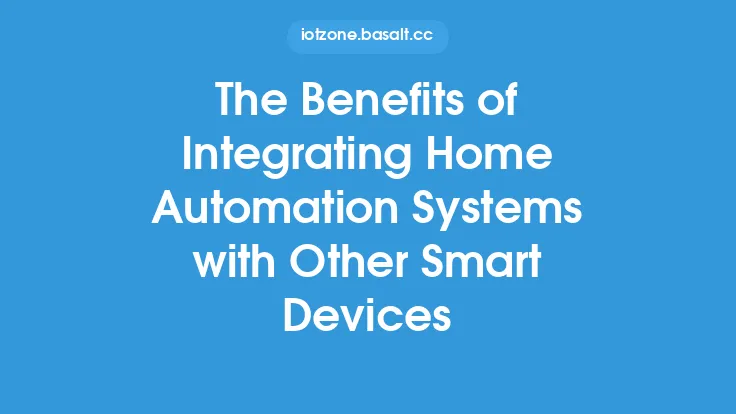The concept of smart home automation has revolutionized the way we live and interact with our living spaces. At the heart of this revolution is the idea of automation and scene control, which enables homeowners to create customized experiences that enhance comfort, convenience, and energy efficiency. With the advent of Internet of Things (IoT) devices, the possibilities of automation and scene control have expanded exponentially, allowing for seamless integration of various devices and systems. In this article, we will delve into the world of automation and scene control, exploring the possibilities and potential of IoT devices in creating a truly smart home experience.
Introduction to IoT Devices
IoT devices are essentially any device that can connect to the internet and communicate with other devices. In the context of smart home automation, IoT devices can range from simple sensors and actuators to complex devices such as thermostats, lighting systems, and security cameras. These devices can be controlled and monitored remotely using a smartphone or tablet, allowing homeowners to manage their living space from anywhere in the world. IoT devices can be categorized into several types, including:
- Sensors: These devices detect and measure various parameters such as temperature, humidity, light, and motion.
- Actuators: These devices perform specific actions such as turning lights on or off, adjusting thermostat settings, or locking doors.
- Controllers: These devices manage and coordinate the actions of various IoT devices, enabling complex automation scenarios.
- Gateways: These devices connect IoT devices to the internet, enabling remote control and monitoring.
Automation Protocols and Standards
To enable seamless communication between IoT devices, various automation protocols and standards have been developed. These protocols and standards define the language and rules that devices use to communicate with each other, ensuring interoperability and compatibility. Some popular automation protocols and standards include:
- Zigbee: A low-power, low-data-rate wireless communication standard used for home automation devices.
- Z-Wave: A wireless communication standard used for home automation devices, offering high reliability and low power consumption.
- Bluetooth: A wireless personal area network (PAN) standard used for device-to-device communication.
- Wi-Fi: A wireless local area network (WAN) standard used for internet connectivity.
- Thread: A low-power, low-data-rate wireless communication standard used for home automation devices.
Scene Control and Automation Scenarios
Scene control refers to the ability to create customized scenarios that automate multiple devices and systems. These scenarios can be triggered by various events, such as time of day, occupancy, or ambient light levels. IoT devices can be used to create complex automation scenarios, such as:
- Good morning scene: Automatically turns on lights, adjusts thermostat settings, and starts the coffee maker at a specified time.
- Good night scene: Automatically turns off lights, locks doors, and adjusts thermostat settings at a specified time.
- Welcome home scene: Automatically turns on lights, adjusts thermostat settings, and plays music when the homeowner enters the living space.
- Away from home scene: Automatically turns off lights, locks doors, and adjusts thermostat settings when the homeowner leaves the living space.
Technical Requirements for Automation and Scene Control
To implement automation and scene control using IoT devices, several technical requirements must be met. These include:
- Device compatibility: IoT devices must be compatible with each other and with the automation protocol or standard being used.
- Network infrastructure: A reliable and secure network infrastructure is required to enable communication between IoT devices.
- Power supply: IoT devices require a stable power supply to function correctly.
- Software and firmware: IoT devices require software and firmware updates to ensure compatibility and security.
- Cybersecurity: IoT devices must be secured against cyber threats, such as hacking and data breaches.
Benefits of Automation and Scene Control with IoT Devices
The benefits of automation and scene control using IoT devices are numerous. These include:
- Enhanced convenience: Automation and scene control enable homeowners to manage their living space with ease, using a single interface or voice command.
- Energy efficiency: Automation and scene control can help reduce energy consumption by automatically turning off lights, appliances, and systems when not in use.
- Increased comfort: Automation and scene control can create customized scenarios that enhance comfort and relaxation, such as adjusting thermostat settings or playing soothing music.
- Improved safety and security: Automation and scene control can enhance safety and security by automatically locking doors, turning on lights, or alerting homeowners to potential threats.
Challenges and Limitations of Automation and Scene Control with IoT Devices
While automation and scene control using IoT devices offer numerous benefits, there are also several challenges and limitations to consider. These include:
- Complexity: Automation and scene control can be complex to set up and configure, requiring technical expertise and patience.
- Interoperability: IoT devices may not be compatible with each other, limiting the potential for automation and scene control.
- Security: IoT devices can be vulnerable to cyber threats, compromising the security and integrity of the smart home system.
- Cost: Automation and scene control using IoT devices can be expensive, requiring significant investment in hardware and software.
Conclusion
Automation and scene control using IoT devices have revolutionized the smart home experience, offering enhanced convenience, energy efficiency, and comfort. While there are technical requirements and challenges to consider, the benefits of automation and scene control make it an essential component of any smart home system. As IoT technology continues to evolve, we can expect to see even more innovative and sophisticated automation and scene control scenarios, transforming the way we live and interact with our living spaces.
